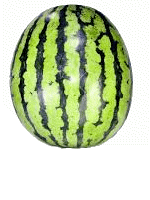 
"Math: the only place where people buy 60 watermelons and no-one wonders why!" High school mathematics textbooks and teachers often use analogies when demonstrating how to do word problems. The reason for this is pretty simple. Except for Math 30, where the mathematics is more advanced, and where the students have had some exposure to sciences such as chemistry and physics, the topics covered in math class don't lend themselves well to the use of actual examples from the real world. While it is certainly possible to find actual applications to illustrate concepts in high school math, the problem lies in how much background information is needed to understand a real problem. Consider the following: "A solution contains 10.0 g of cobalt(II) chloride dihydrate, CoCl2•2H2O, in enough ethanol to make exactly 500 mL of solution. What is the molar concentration of CoCl2·2H2O?" While this is a relatively straightforward chemistry problem involving ratios and a formula, students who haven't taken Chemistry 30, or for that matter, any previous chemistry course, won't even understand the problem. The terminology will prevent them from being able to solve it. Real world problems, for the most part, require a body of knowledge unfamiliar to students. They can't begin to solve a word problem involving real concepts from engineering, physics, or chemistry, if they don't understand the problem in the first place. Moreover, students who struggle with math will find the additional layer of complication very frustrating. To deal with this, teachers will create problems that practice mathematical concepts, but which deal with familiar everyday situations. The result is a problem like this: "Mary's order of three bottles of shampoo and five bottles of conditioner cost $51. Edith's order of seven bottles of shampoo and one bottle of conditioner cost $39. What is the price of one bottle of each?" It deals with something everyone can understand. While no-one would ever use math to solve this problem outside of school, a good math teacher will explain to students that the problem is an an analogy, substituting a familiar situation for a real-life one which may be too complicated to understand without special knowledge. That's the reason for watermelons! |